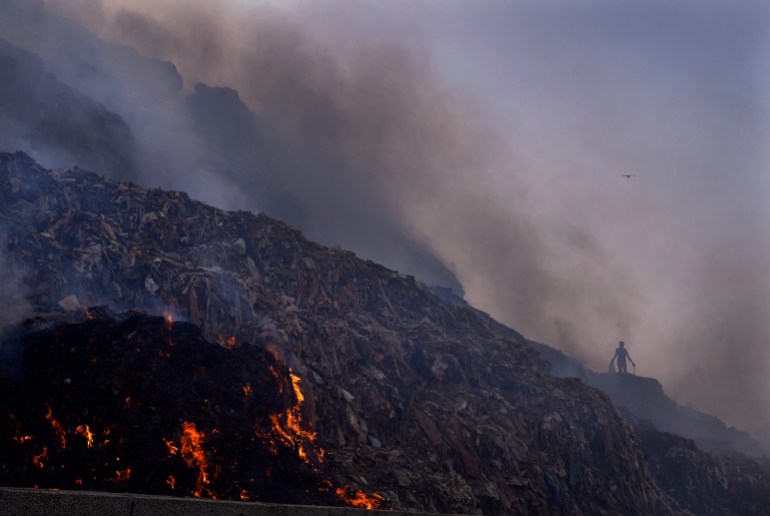In the Food Waste Index Report published on Wednesday, the UN said households and businesses binned more than one trillion dollars’ worth of food at a time when more than 780 million people were going hungry.
The index tracks the progress of countries attempting to halve food waste by 2030.
It said that more than one billion tonnes of food – almost one-fifth of all the produce available on the market – was wasted in 2022, most of it by households.
“Food waste is a global tragedy. Millions will go hungry today as food is wasted across the world,” Inger Andersen, executive director of the UN Environment Programme, said in a statement.
Such wastage was not just a moral but “environmental failure”, the report said.
Food loss and waste generate 8 to 10 percent of global greenhouse gas emissions. If it were a country, it would rank third after China and the United States.
The report, co-authored with non-profit organisation WRAP, is the second on global food waste compiled by the UN and provides the most complete picture to date.

Conservative estimate
The report said that the “billion meals” daily figure was a “very conservative estimate” and “the real amount could be much higher”.
“For me, it’s just staggering,” Richard Swannell from WRAP told news agency AFP.
“You could actually feed all the people that are currently hungry in the world – about 800 million people – over a meal a day just from the food that is wasted every single year.”
He said bringing together producers and retailers had helped reduce waste and get food to those who need it, but more action was needed.
In 2022, food services like restaurants, canteens, and hotels were responsible for 28 percent of all wasted food, while retailers like butchers and greengrocers dumped 12 percent.
But the biggest culprits were households, which accounted for 60 percent – some 631 million tonnes.
Swannell said much of this occurred because people were simply buying more food than they needed, misjudging portion sizes, and not eating leftovers.
Another issue was expiration dates, he said, with perfectly good produce being trashed because people incorrectly assumed their food had gone off.
Food loss
Kalyani Raghunathan, a research fellow at the International Food Policy Research Institute, told Al Jazeera that global production of food far exceeds the global requirement.
“It’s not about net supply and demand – it’s more a question of the distribution of that food,” she said.
She noted the terms “food loss” and “food waste” are often used interchangeably, but that rates of food loss and food waste were different around the world.
“We tend to see that a lot of wastage is concentrated in higher-income countries. We see more food loss in lower-income countries. And that’s the part of the food that gets lost between production and when it arrives to be sold. The food waste part of it, which is from retail up until consumption, which tends to be in higher income countries and particularly at a household level.”

‘Devastating effects’
Food waste had “devastating effects” on people and the planet, the report said.
Converting natural ecosystems for agriculture is a leading cause of habitat loss yet food waste takes up the equivalent of nearly 30 percent of the world’s farming land, the report said.
“If we can reduce food waste across the entire of the supply chain, we can … minimise the need to have land set aside that’s growing stuff that’s never used,” Swannell said.
It is also a key driver of climate change, generating up to 10 percent of annual greenhouse gas emissions.
“If food waste was a country, it would be the third-biggest emitter of greenhouse gas emissions on the planet behind the US and China,” Swannell said.
But people rarely think about it, he said, despite the opportunity to “reduce our carbon footprint, reduce our greenhouse gas emissions, and save money, simply by making better use of the food that we’re already buying”.
